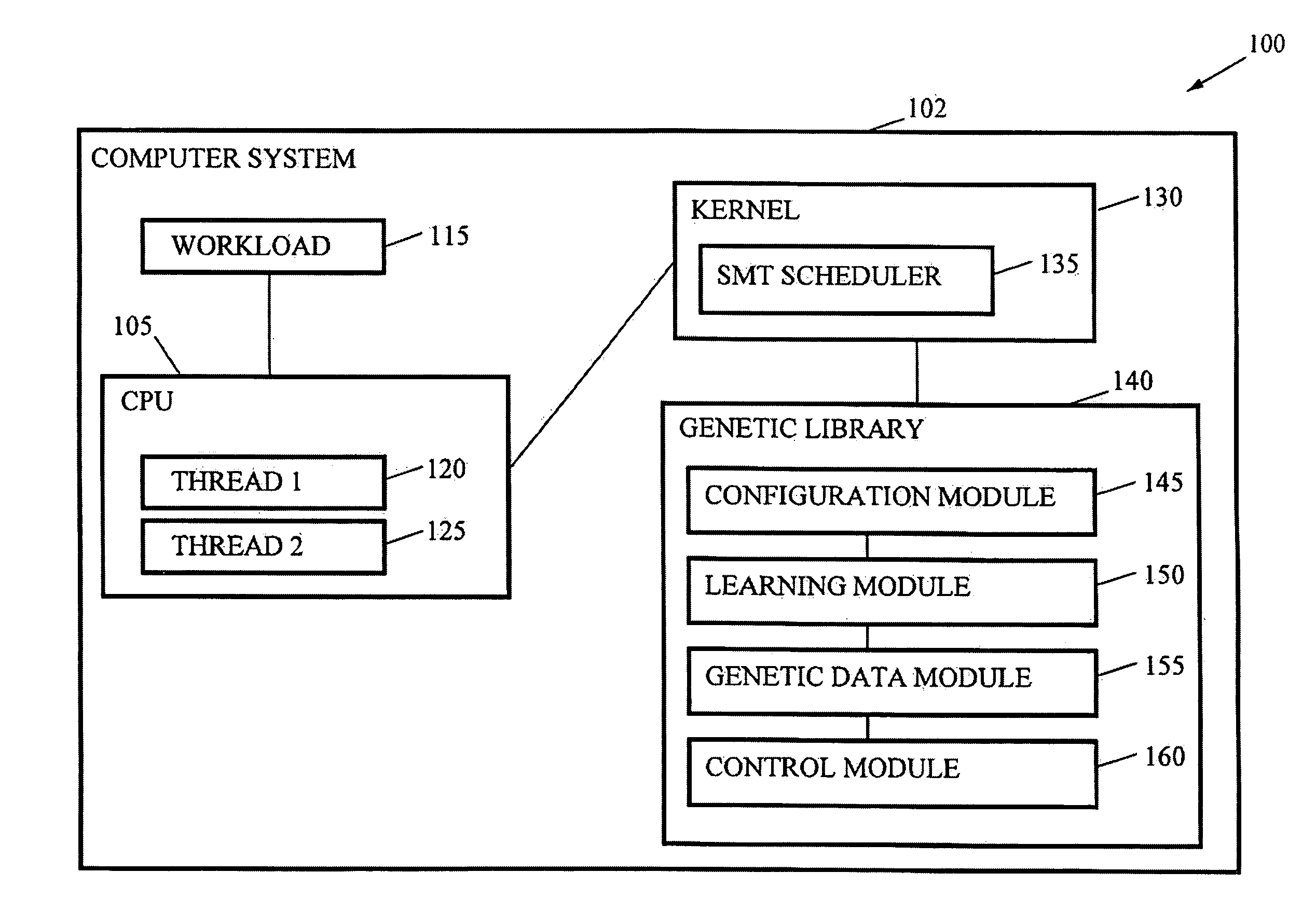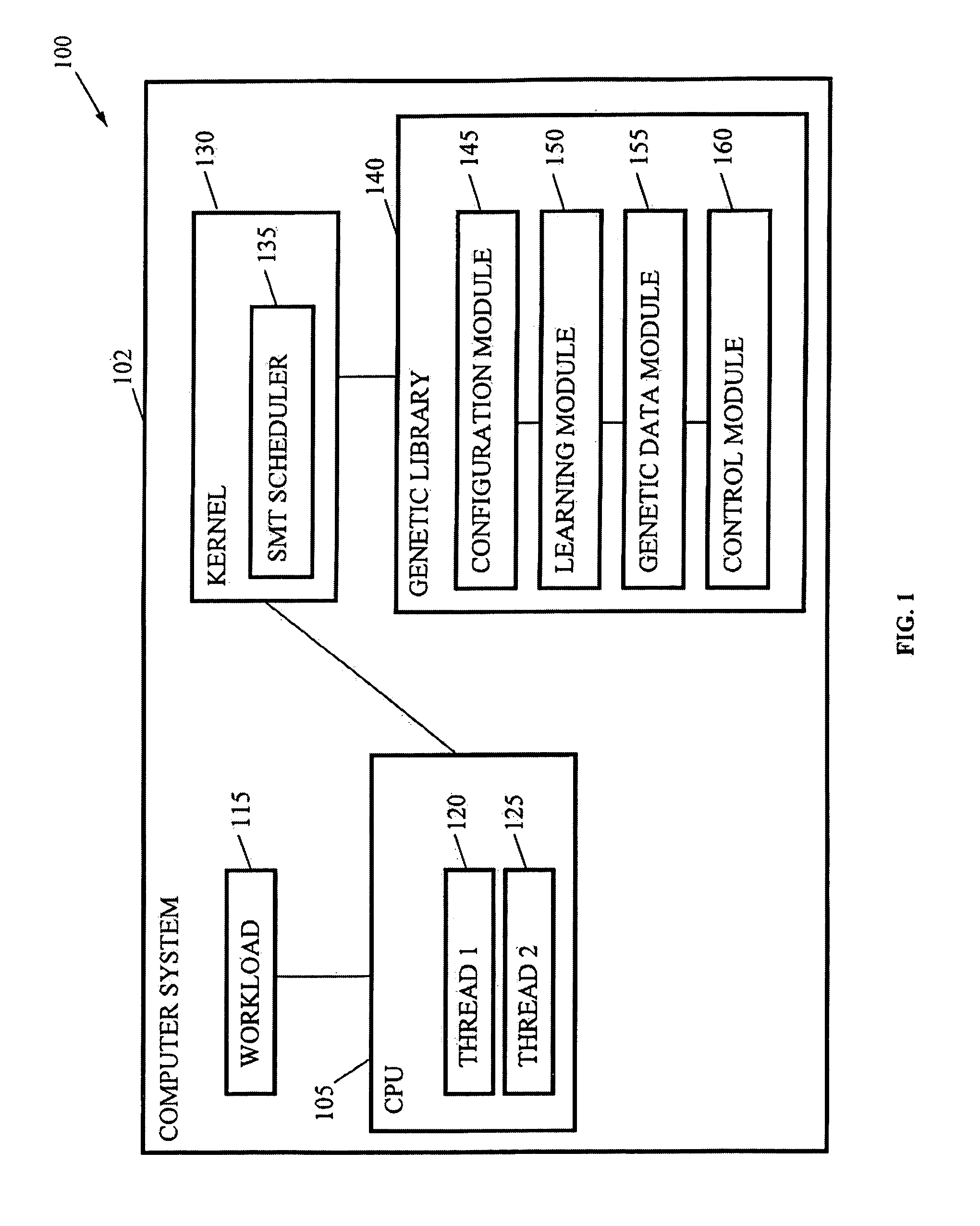Autonomic SMT System Tuning
a technology of automatic system tuning and smt, applied in the direction of genetic algorithms, instruments, digital computers, etc., can solve the problems of two copies often interfering with each other, processing often using a speed-increasing speed, and difficult multitasking for general tasks, so as to minimize latency, optimize processing workload, and increase throughput
- Summary
- Abstract
- Description
- Claims
- Application Information
AI Technical Summary
Benefits of technology
Problems solved by technology
Method used
Image
Examples
Embodiment Construction
[0021]The following is a detailed description of example embodiments of the invention, a description further enhanced by the accompanying drawings. The embodiments are examples and are in such detail as to clearly communicate the invention. However, the amount of detail offered is not intended to limit the anticipated variations of embodiments; on the contrary, the intention is to cover all modifications, equivalents, and alternatives falling within the spirit and scope of the present invention as defined by the appended claims. The detailed descriptions below are designed to make such embodiments obvious to a person of ordinary skill in the art.
[0022]Generally speaking, systems, methods, and media for autonomic system tuning of simultaneous multithreading (“SMT”) are contemplated. Before discussing details of the invention, however, a discussion of the problem and invention's purpose ensues. After this preliminary discussion, details of the invention follow.
[0023]Many modern centra...
PUM
 Login to View More
Login to View More Abstract
Description
Claims
Application Information
 Login to View More
Login to View More - R&D
- Intellectual Property
- Life Sciences
- Materials
- Tech Scout
- Unparalleled Data Quality
- Higher Quality Content
- 60% Fewer Hallucinations
Browse by: Latest US Patents, China's latest patents, Technical Efficacy Thesaurus, Application Domain, Technology Topic, Popular Technical Reports.
© 2025 PatSnap. All rights reserved.Legal|Privacy policy|Modern Slavery Act Transparency Statement|Sitemap|About US| Contact US: help@patsnap.com



